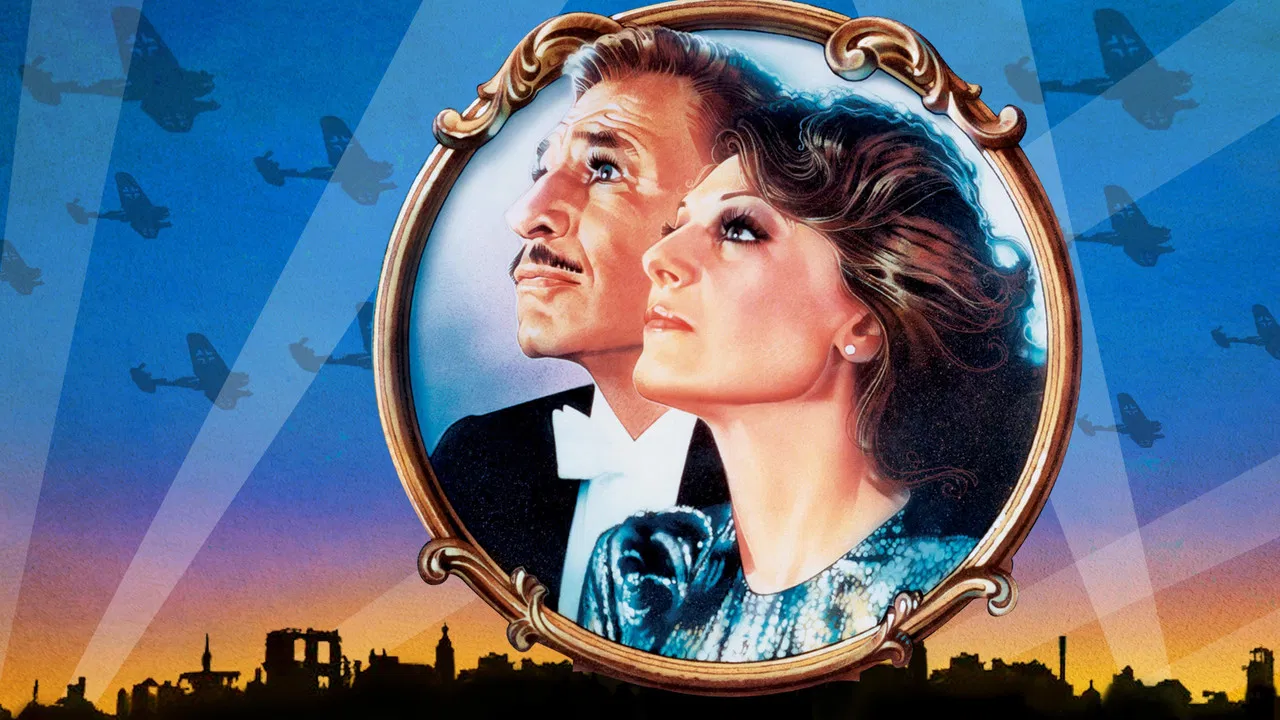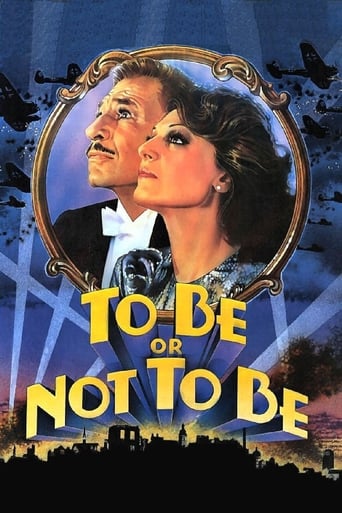

I know that this was a remake of a 1942 Ernst Lubitsch movie, but I've never seen the Lubitsch version. So, the Mel Brooks version of "To Be or Not to Be" is the one that I know. And I really like it. Just as he did in "The Producers", Mel makes the audience laugh hysterically at the Nazis (also accomplished by Charlie Chaplin and Roberto Benigni). Like many movies, it goes to show that humor really is the best way to deal with political issues...and also that Mel didn't have to be completely silly to come up with great ideas. Too bad that Mel Brooks and Anne Bancroft didn't co-star more often, as they were definitely a cool team here. You're sure to love it. And just remember what to do the next time that you have to deal with chronic invaders...Also starring Tim Matheson, Charles Durning, Christopher Lloyd and Estelle Reiner.
... View MoreActually, when interviewed about this movie, Mel Brooks said it was an homage to Jack Benny. And if you look, the Bronskis live on Kubelsky Street, Benny Kubelsky is Jack Benny's real name. There are many other touches that also show Brooks' love for the original. Anne Bancroft is a true treat. Her comedic talents shine, she was truly a rare actress, and will be missed.It was well done, with Mel Brooksian flair, and respectful of the original. I won't add comments about the acting, there are so many pros and cons at this point, one more won't make a difference. But if you have some free time, see BOTH of the movies. It's not sacrilege to like them both.
... View MoreThe older I get, and the more I am exposed to great ideas in film, especially comics in film, the less I tolerate Brooks.That's because he isn't a filmmaker. Never was. He's a vaudevillian, a stage comic. Now, that can be funny, and I suppose he's good at what he does. But there's a magic in cinema, in cinematic humor that bites deeper. Movies have a solvent when done right, a solvent that allows the humor to catalyze change.When you're on a stage, we expect the performer to be different, remote. We even laugh at the remoteness.Consider the film humor of embarrassment. We have a whole industry based on that, dozens of movies a year. They work because we enter the thing and feel embarrassed. That'll never happen with Brooks because he sees these as filmed stage shows.If you watch this, what you'll get is a rather clever acknowledgment of this. At root it is a simple structure: real world with Nazis, stage show with Nazis. (And of course, we chuckle, knowing Brooks' claim to fame is "Springtime for Hitler.") And as the thing goes on, we have the stage show and reality blurring from both ends.Brooks "plays" certain Nazi characters. And as time goes on the Nazis get more and more like stage characters. One device is rather sophisticated, where the real Nazi is made (by Brooks) to appear as a fake. And yes, Jews escaping as clowns from a pretend truck to a real one.At the center of all this is a valentine from Brooks to his wife. She's allowed to mug, and be the irresistible love interest to all heterosexual men, good and bad.If you go into this for laughs, you'll be disappointed. If you go into it as an essay on humor on the stage, you'll find it pretty darn impressive, worthy of the guy who introduced David Lynch to us through "Elephant Man."Ted's Evaluation -- 2 of 3: Has some interesting elements.
... View More"To be, or not to be", in this version, while taking the basic idea from the classic by Ernst Lubitsch, is not a copy, but a variation on an idea. Under the direction of Alan Johnson, the film is worth a look because of all the people that were gathered to make a contribution.Who knows what Mel Brooks might have been able to do with this movie, but since he's only acting in it, his hands appear to be tied. The idea of Mr. Brooks as a popular theater actor offers possibilities. His wife, Anna, brilliantly played by (Anne Bancroft) gives us a chance to observe this wonderful couple at the top of their form.Some familiar faces are also seen. Tim Matheson, makes a great ace pilot, secretly in love with Anna. Charles Durning does an excellent portrayal of the Nazi Colonel Ehrhardt. Jose Ferrer is seen in the pivotal role of a traitor.Probably the best scenes involve Mr. Brooks and Ms. Bancroft singing and dancing. Also, Mr. Brooks makes an incredible take off on Hamlet and as Hitler.While the film is not all what one expects, it's gives us an excuse for watching it and still have a good time while at it.
... View More